News
DOES ECOLOGY MAKE SENSE?
Back to...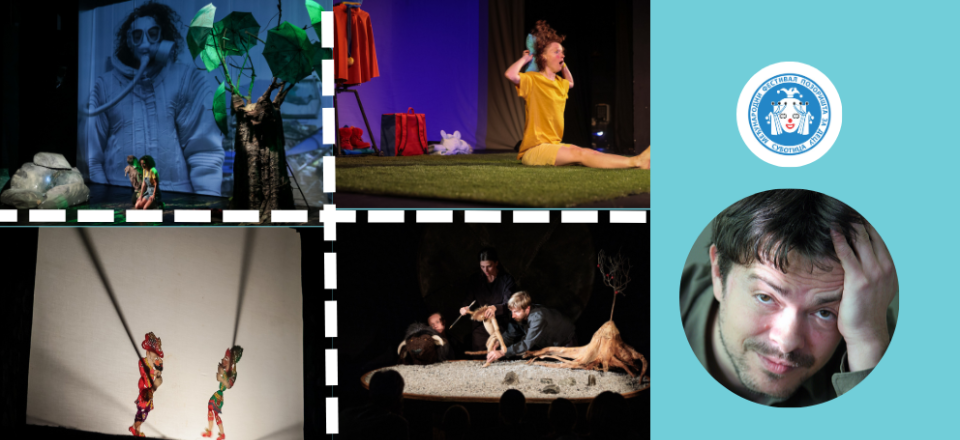
The Rain is a-fallin’, the |Grass is a-growin’
I remember an environmental workshop in which a more experienced colleague gave us an advice on how to write about the issues of the Planet. Not to write about too much plastic or that illegal landfills are popping-up all around us, but by describing an individual case that can seem like everyone's experience. Close to that, I’d reckon, would be Rambo's ironic lyrics "If you ask me, I’d cut down every forest/ and decorate them with tractor tires". So would be my response upon being offered a plastic bag in the supermarket: "No need, thanks, I'll just pick one from a tree!"
One such story is the basis of the play The Green Mountain written by Mila Mašović Nikolić and directed by Branko Ilić (performed by NGO Youth Theatre from Montenegro). With the changing weather, I just started humming The rain is a-fallin’, the grass is a-growin’, when suddenly - the green mountain! And sitting under the tree brother and sis - hey!
I’m not certain if Mila Mašović Nikolić really got inspiration from the famous children's song, but I can say that her play consists of a tree, a brother and a sister, a green mountain, a wellspring, a mother, a father and a businessman. A girl and a boy go for a trip to Vučje vrelo which is dominated by an old tree. A businessman soon arrives whose phonecall is overheard by the girl as she learns his plans to build a parking lot and a hotel with a swimming pool and gym. However, the real surprise comes a while little upon discovering that their mother is the one to sell the estate.
If constant bickering with her littering brother (uninterested in nature or "biology lessons") was a tough battle for the girl, what can be expected from her confrontation with the adults, in order to prevent outpouring of concrete onto another oasis on which our lives depend? Her mother explains that she cannot repay the loan by herself (their father has passed away) and work two jobs to raise them, but the girl does not give up...
The girl's name is Gorana (Danica Rajković’s portrayal is excellent as is her colleague Lazar Đurđević in the roles of the brother and the businessman) and judging by the reactions of the children in attendance, they quickly grew fond of her character and sympathized with her struggle. Finally - a real life scenario kind of a play. Yesterday, I wrote how fairy tales can serve as an initiation into the adulthood – such is the case with this plot. Let's just say that a suitable title would then be The Red Riding Mountain.
Some of the new schools of thought in ecology don't focus on 20th century problems. Today, we have new technologies and with them a new insatiable desire to exploit the Planet for resources. The fact that an electric car drains more resources than an old fashioned biodiesel tractor sounds astonishing! Ultimately, it produces more pollution. This is not a story about technology, ideology, banks, investments, children or insurance. This is a story about people and their nature.
A Choreographed Stand-Up
Comedy about Clothes Rita Gobi is an exceptional dancer. Her physical attributes in the field of contemporary dance have long been acknowledged on the stages of Subotica. However, she always finds new ways to surprise us, to perform a novelty on stage. What does she have in store for us this time?
The stage design consists only of the costume (or so it seems). From behind the screen, her leg appears as if it was held by hand. She moves it up and down, jerks and convulses, as if she were a puppet. And that's just the beginning of the play.
As soon as she steps out from behind the screen, it becomes clear that she is indeed capable of performing the opening scene without any special effects or props. Her limbs, her hips - her whole body really - are so elastic that, during the first few minutes of the show, she seems to be made entirely of rubber as she twists and turns with a pillow pretending to be sleepy, tossing and turning on the bed (the entire space of the stage).
Her face seems to be made of rubber, too. She is in control of every muscle and produces such grimaces as if she was a cartoon character coming to life. It’s a unique face-dance!
The main focus is, after all, audience’s engagement. Apart from the use of body, the use of objects is apparent. In this case - vivid pieces of clothing which the actor arranges one over another across her body. She occasionally checks the clock, to emphasize that she is in a hurry, thus raising the tension in the audience because her dressing-up seems to take forever. Time truly becomes a relative category.
She succeeds in engaging the children in the play as they cheer and shout instructions on how to properly dress herself. However, the girl on stage seems uninterested, doing her Pippi Longstocking routine as if she's been possessed by aliens. She even looks like Pippi. In the finale - a crescendo. Just when you thought she somehow managed to get dressed and won't be late - another piece of clothing appears.
It really was impossible not to enjoy this play. The children couldn't restrain themselves - they climbed on the stage even before the show ended - such was the magnetic pull of Rita Gobi.
Prehistoric, Part Two
There must be something curious in our prehistoric human existence that is not - as the new findings say - a duel or even cooperation between Neanderthals and "advanced" humans, homo sapiens. Every now and again, the stage at Subotica festival is occupied by some ancient tribe or an ancient species. From previous years, I remember a play about people living in frozen regions and The Primitive Girl from Zrenjanin. This year, similar protagonists are featured in two of the plays: The Gold Diggers from Germany (which I reviewed yesterday) and The Prehistoric People by Jiří Šponar (Positive Theatre, Czech Republic).
Stage and puppet designs of Vendula Bělochová leaned towards natural materials. Stone, leather-like fur (or at least imitation), wood, moon like a big drum, medium-sized puppet that is occasionally operated by three actors - they all represent the natural environment of our ancestor, hunter-gatherer at first, the inventor of fire and tools, later the farmer as history usually teaches. In schools, this would be a fantastic lesson conveying to the kids, in the most beautiful way possible, the subject of navigating nature and primary instincts. In the theatre - even the one intended for a very young age (4+) – we get the impression that the story is too linear and predictable, especially for an experienced viewer. Clichéd even, when it comes to (not) explaining His (yes, a man) origin in the wasteland. Of course then, at one point he meets Her, very conveniently.
However, the image of us is sufficiently beautifully and dynamically puppeteered, in a theatrical setting not keen on posing big questions. A healthy dose of humor is present too (for example in a scene when a clothed woman meets a naked man, or the scene with a buffalo that has cubs and even produces milk) in order to dispel any dose of skepticism that the story of our ancestors is exactly the way it is charmingly presented to us.
Uncle Karagyoz
I'm already being teased by everyone at the Festival for my public love of the Jancsi Bacsi character (whom I refer to as The Rolling Stone) known for kicking the Devil’s butt. Then behold - Karagyoz! An original in the original shadow theatre Cengiz Osek from Turkey. I use the term original implying the old technology of producing theatre magic.
Cengiz Osek is author, director and a performer in the play The Magic Tree. There was no translation, so I didn't quite understand everything, but I haven't heard so many sounds, movements, farts and laughter in a long time which I found really cute.
Truth be told, the play’s exposition filled with numerous fights took too long for me to truly appreciate what followed: a story about a tree and Karagyoz's clumsy entanglement with a curse, the fight with a snake and subsequently transformation into a goat - if I saw and understood correctly. The skill was evident, the rhythm and comedy repetitive thus inexhaustible.
Karagyoz, just like the character of Jansci Basci and many other similar heroes, usually represents the spirit of the people and its will and struggle to overcome all obstacles. When obstacles are difficult, all means are allowed. This kind of theatre preserves the spirit and memories and I look forward to it innocently and naively, although I personally prefer Beavis & Butt-head much more.
Igor Burić
Back to...-
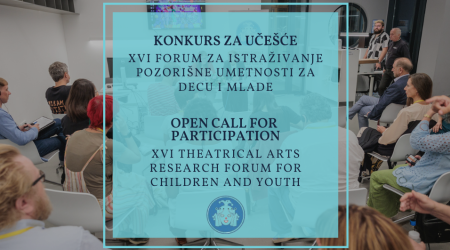 29 october 2024
29 october 2024Call for Proposals of Participants for 16th Theater Art Research Forum for Children and Youth
-
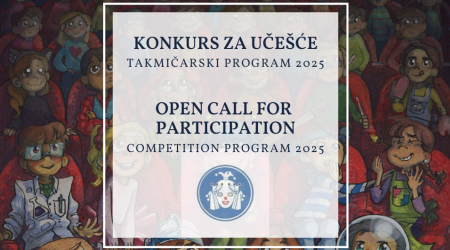 25 october 2024
25 october 2024Open call for participation in the competition programme of the 32nd Festival
-
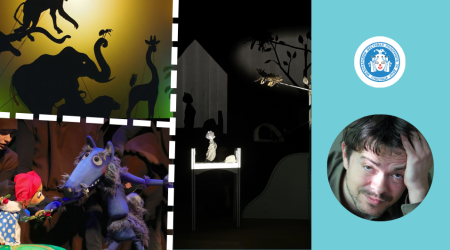 02 october 2024
02 october 2024IS THERE ANYTHING MORE BEAUTIFUL THAN THE THEATRE?
-
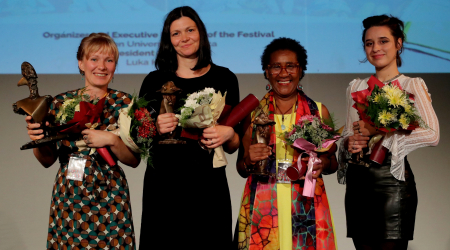 28 september 2024
28 september 2024Don’t Wait for Me… announced the best play of the 31st International Festival of Children's Theatres Subotica









